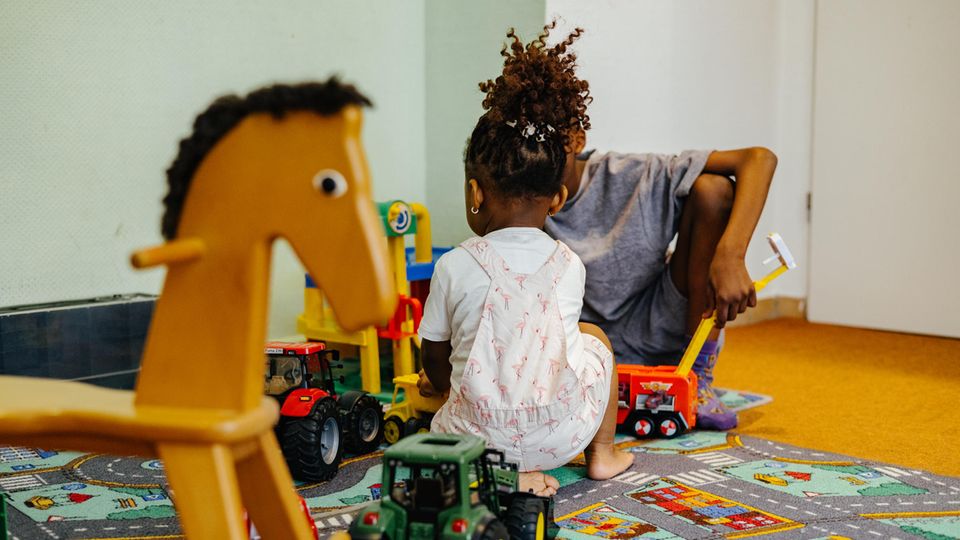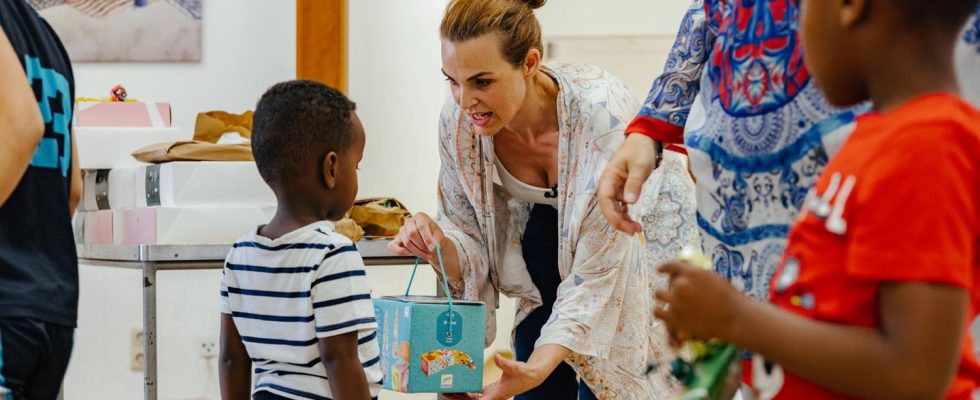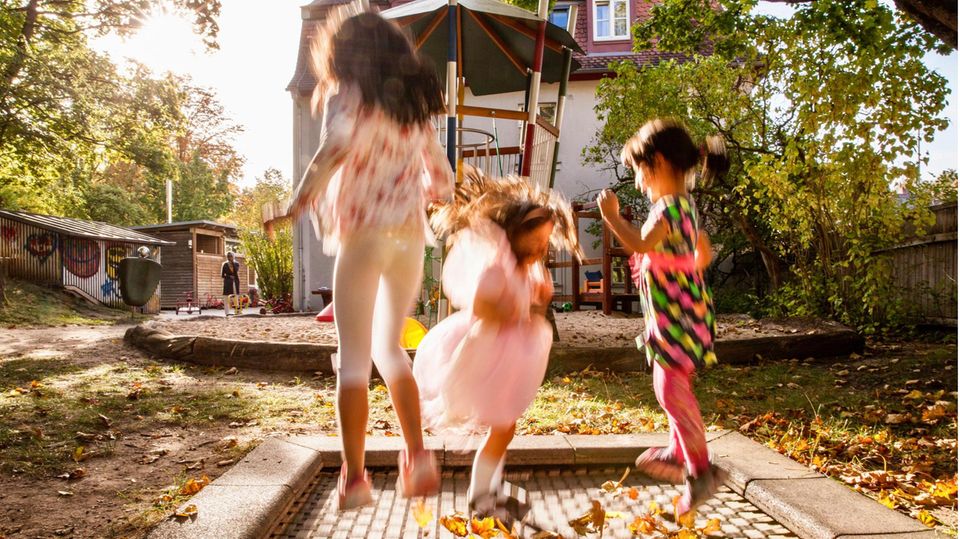There are 400 women’s shelters in Germany. The project “A good place for children” is intended to help mothers and children be strengthened to start their new lives. A conversation with Annika Lau, who will present the project at the RTL donation marathon.
Ms. Lau, the 24-hour RTL fundraising marathon starts on November 16th at 6 p.m. You take part as a sponsor of a project that… Children in women’s shelters. Why are you committed to this topic in particular?
I am a mother of three children. I’m interested in everything that has to do with children. Children don’t have their own lobby, so I like to stand up for them. Children are our future and if we forget them, we can forget the whole world. We have to protect them and are responsible for these little creatures.
As part of the project, you and a camera team have a day in one Women’s shelter spent in Bremen. What did you think awaited you in the women’s shelter?
I knew it would be a difficult day. Beforehand, I spoke to the manager on the phone, who told me some of the residents’ stories. It’s hard to imagine what she and her children had to experience. After the phone call, tears were streaming down my eyes. Unfortunately, I am very permeable. Every suffering comes to me completely unfiltered.
What kind of stories were those?
Basically it was about every form of violence. Verbal and also physical. There was talk of knives, an axe. One Woman said her husband stood in front of her and shouted: “I’ll set you on fire!” Why the hell did the man marry the woman if he wants to set her on fire now? There is no answer to that.

More minors than adults flee to women’s shelters – around 16,000 children every year
© Melina Mörsdorf Photography
Was there anything that surprised you?
I asked myself in advance what it would be like Women live. Unfortunately, I was a bit biased. When I was there and spoke to the women, I noticed that they were incredibly smart, educated, nice women. I still remember thinking, “These are normal women. Mothers like me. I could be one of them.” Domestic violence occurs in all classes and population groups. What also surprised me: The children weren’t as disturbed, frightened or shy as I expected.
Rather?
There was a little boy, two and a half years old, who was super clingy. Jumped straight into everyone’s arms. At first I thought: “Oh, look at such a trusting child. There is still hope.” A teacher later told me that children who have experienced terrible things behave like this. The boy just wanted love. Physical closeness, hugging, cuddling. He sought security – from everyone – because he didn’t know it from his family environment. That was very close to me. And that was the case with some children. Child trauma works differently than adult trauma. Children have completely different needs.
What was your overall impression of everyday life in the women’s shelter?
I felt a great sadness. Everything was very quiet – except of course the children’s area, where it was bustling. I had the feeling that the women were at attention. That they always have in their mind what could happen next. Fearful. What I found very nice, however, was the togetherness of the women. I think they had a special connection because they all experienced really terrible things. The children are also there among peers who understand them.
What did the children in the women’s shelter tell you?
I spoke to a former resident and her son about their time in the women’s shelter. The boy is now 14 years old. He told me how cruel his father was. And that he was ashamed of living in a women’s shelter back then, even though he was better off there. In front of his friends, he acted as if he had an intact family, a normal house. He didn’t want to be pitied. They now live in their own apartment again. The mother separated from the violent partner and remarried. Unfortunately, the stepfather is no better than the biological father.
How come?
The stepfather doesn’t treat the mother well either. So the boy is still not safe. He told me that he is constantly tense and is afraid that he will have to call an ambulance again. I find it tragic that this child is not allowed to be a normal child.
How are the children helped in the women’s shelter?
The children who arrive there are not always as lively as the ones I met. At first most people are empty inside. You have to learn to be a child again. That’s what social educators are for. They try to lure the traumatized children out of their shells and show them that the whole world is not bad. Only a small part is bad, the rest is okay. Unfortunately, the employees are at their limit. A lot more staff would be needed to look after the children.
The project collects money for this support “A good place for children, where you are a sponsor, money. Up to 150 educational offers for children and young people in women’s shelters are to be made possible through donations. Why is money needed here?
When you think of the women’s shelter, you only think of the women. More children than women live in such institutions. If there is violence in families, the children are the ones who suffer. They are dependent on their parents – in need of protection. They cannot decide when to leave violence behind. They have to wait for their mothers to take the step to leave. And then they have to hope that there is a free place in a women’s shelter. Women’s shelters regularly have to reject those affected. You have to imagine this: a woman with three children is standing at the door and can’t stay. A brave woman who managed to leave her abusive partner. And now she doesn’t know where to go. Is still in danger. Of course the women’s shelter staff try to make everything possible, but if there is no space, they can’t do anything. Politicians must act urgently.
What can each individual do to help?
It should no longer be a taboo topic to talk about experiences of violence. We just have to accept that violence exists. And we shouldn’t look down on those affected. We’re just lucky not to be in their shoes. You can also donate money and donations in kind. The families flee and have nothing with them. They are happy about clothes, shoes and toys.
What do you take away from your visit to the women’s shelter?
I am more grateful for the way my life is going. That my family and I don’t have to suffer this fate. The first thing I did when I came home from the women’s shelter was hug my children tightly.



